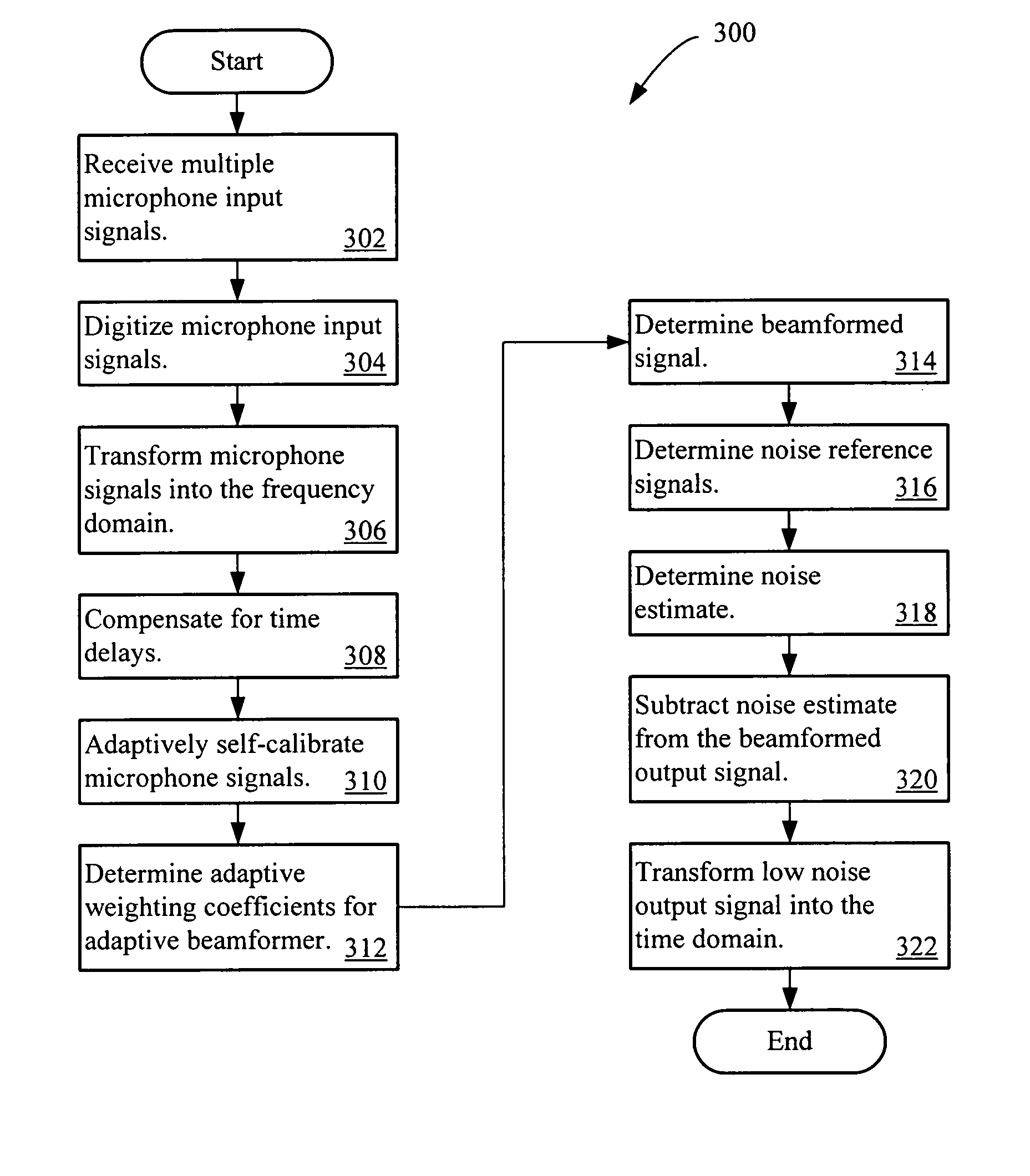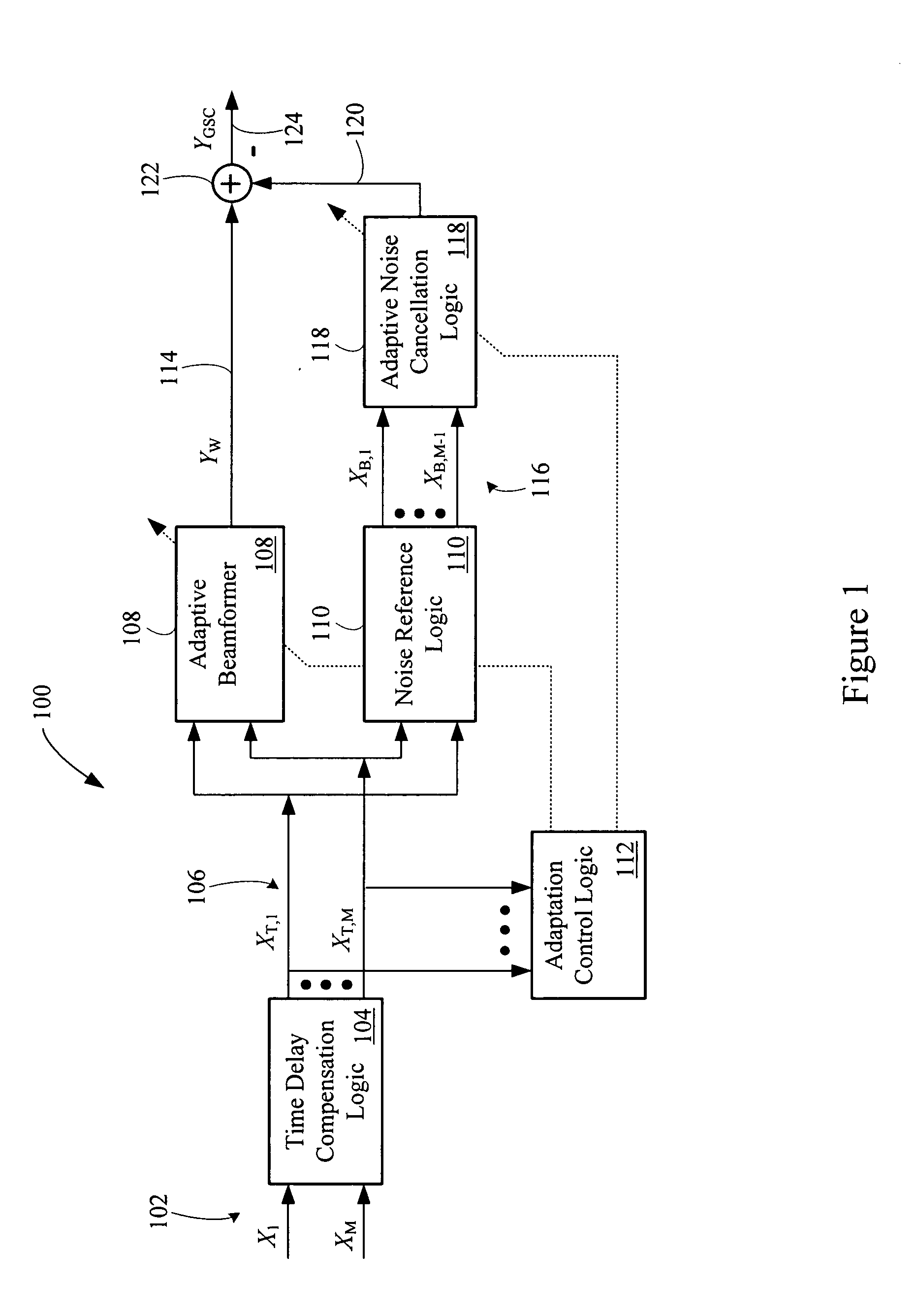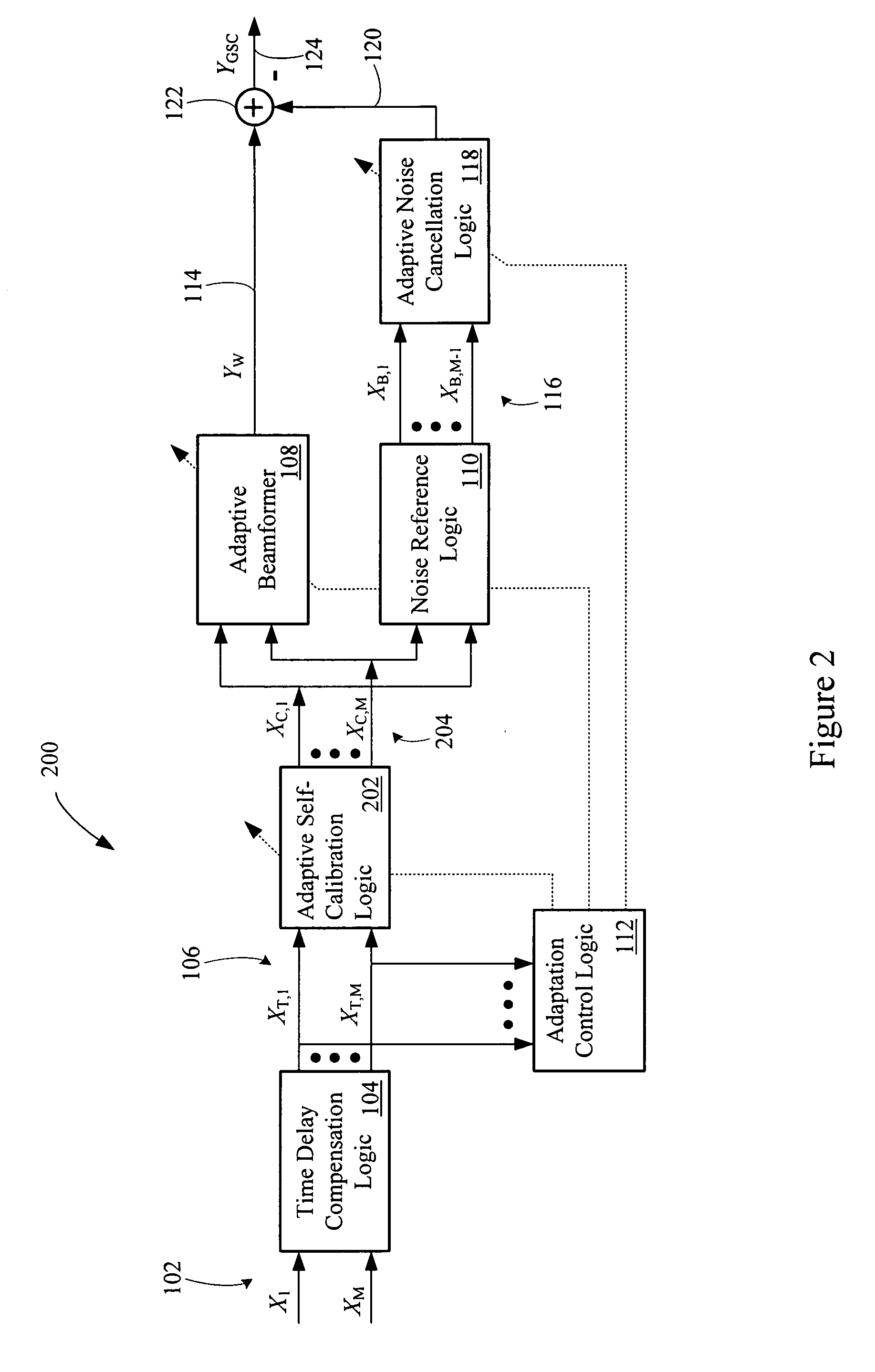Multi-channel adaptive speech signal processing system with noise reduction
a speech signal and adaptive technology, applied in the field of signal processing systems, can solve the problems of poor signal-to-noise ratio (snr), reducing speech recognition accuracy, masking, distortion, etc., and achieve the effects of improving downstream processing system performance, improving speech signal clarity and intelligibility, and enhancing communication
- Summary
- Abstract
- Description
- Claims
- Application Information
AI Technical Summary
Benefits of technology
Problems solved by technology
Method used
Image
Examples
Embodiment Construction
[0022]FIG. 1 shows a multi-channel adaptive speech processing system 100. The processing system 100 reduces noise originally present in one or more input signals. A low noise output signal results.
[0023] The processing system 100 includes microphone signal inputs 102. The microphone signal inputs 102 communicate microphone signals X1 to XM to time delay compensation logic 104. The microphone signals may be provided to the processing system 100 in the frequency domain and in sub-bands, denoted as X1(n,k) to XM(n,k), where the index ‘M’ denotes the number of microphones, ‘n’ is a frequency bin index, and ‘k’ is a time index. However, the processing system 100 may instead process the microphone signals in the time domain, a combination of the time domain and frequency domain, or in the frequency domain.
[0024] The time delay compensation logic 104 generates time aligned microphone signals XT,1 to XT,M on time delay compensated microphone signal outputs 106. The time delay compensated ...
PUM
 Login to View More
Login to View More Abstract
Description
Claims
Application Information
 Login to View More
Login to View More - R&D
- Intellectual Property
- Life Sciences
- Materials
- Tech Scout
- Unparalleled Data Quality
- Higher Quality Content
- 60% Fewer Hallucinations
Browse by: Latest US Patents, China's latest patents, Technical Efficacy Thesaurus, Application Domain, Technology Topic, Popular Technical Reports.
© 2025 PatSnap. All rights reserved.Legal|Privacy policy|Modern Slavery Act Transparency Statement|Sitemap|About US| Contact US: help@patsnap.com



